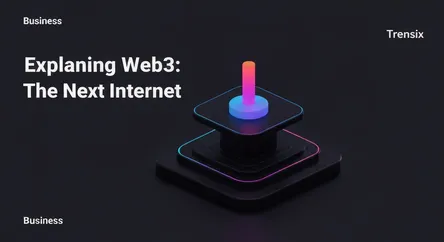Business
Explaining Web3: The Next Internet

Discover Web3, the next evolution of the internet built on blockchain. Learn why decentralized apps (dApps) are creating new startup opportunities.
What is it?
Web3 represents the next evolution of the internet, envisioned as a decentralized online ecosystem built on blockchain technology. Unlike Web2, where large corporations control data and platforms, Web3 aims to give ownership back to users. It's characterized by key principles like decentralization, permissionless access, and verifiable transactions. Core components include decentralized applications (dApps) that run on blockchains or peer-to-peer networks, and smart contracts that automate agreements without intermediaries. This framework creates a more transparent and user-centric web where individuals can control their own data, identity, and digital assets.
Why is it trending?
Web3 is trending due to a convergence of technological advancements and a growing desire for a more equitable internet. Massive venture capital investment is fueling a wave of startups building new financial systems (DeFi), digital collectibles (NFTs), and immersive virtual worlds (the metaverse). The trend is driven by the promise of disrupting traditional business models, reducing reliance on Big Tech, and creating new economies. This potential for innovation and the creation of novel, community-owned platforms has captured the imagination of developers, investors, and entrepreneurs worldwide.
How does it affect people?
For individuals, Web3 offers the potential for greater control and digital sovereignty. Instead of your data being a product sold by companies, you can own and even monetize it directly. It enables new forms of digital ownership through NFTs and participation in decentralized autonomous organizations (DAOs), giving users a say in how platforms are governed. For startups, it opens a new frontier for building applications without needing permission from gatekeepers like Apple or Google. This creates opportunities for more transparent, resilient, and user-focused services, fundamentally changing how people interact, transact, and create online.